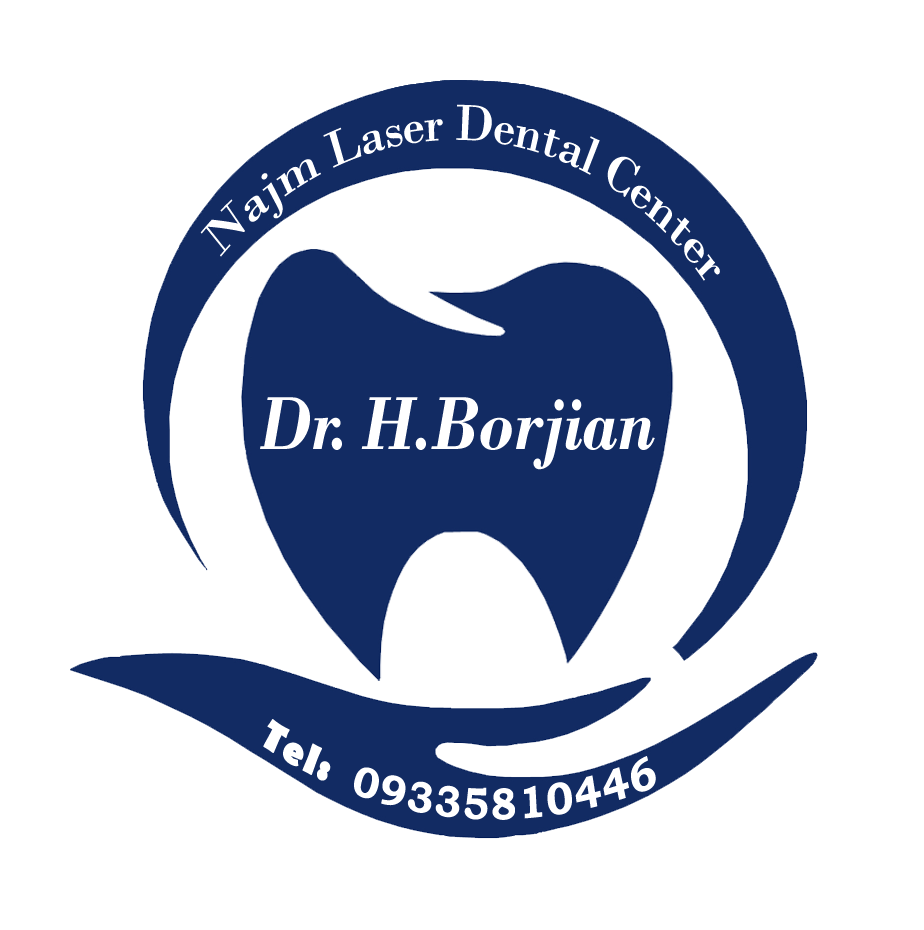Investigating the causes of pain in coated teeth
Factors such as temporary sensitivity of teeth and gums, failure to install dental veneers properly, inappropriate veneers, tooth decay under veneers, gum recession, etc. can be the main reason for your tooth pain after veneering.. In this article from Dr. Hossein Borjian's website The best cosmetic dentist in Isfahan We examine the causes of the pain of coated teeth.
Recovery period and change of chewing mode
In most cases, after the crown is placed on the patient's tooth, pain begins, which is temporary. And it may occur as a result of installing the cover and changing the chewing mode. An acidic material is used to install the coating. which can affect the nerves of the tooth and irritate it. In these cases, the patient's tooth becomes sensitive for several days.
The size of the cover
Sometimes the cause of pain Dental crowns It is the size of its cover. This pain occurs after the first week of dressing. In this case, the veneer puts pressure on the adjacent teeth. And it leads to pain. The crown should not exceed a certain height. Otherwise, it may cause the fracture of the crown tooth or surrounding teeth, as well as pain and damage to the opposite teeth.
A cover that does not fit properly on the tooth!
Yes, it's true, sometimes there is a chance that the crown will not fit on the tooth. This condition causes pain in the teeth, jaw, head and even chewing disorder. This problem can be solved by consulting a doctor. It is enough that your dental veneer is designed and attached based on your chewing form.
Gum pain after dental veneers
After the coating, sometimes a temporary pain may be felt in the treated area and the gums. This pain is normal for up to two weeks, but if the intensity of the pain increases and continues after this period, you should consult a dentist..
Gingival analysis
If your toothache is in effect Gingival analysis be created, in this case your tooth should have symptoms such as the following symptoms:
- Bad Breath
- The root of the tooth is exposed.
- Teeth become discolored.
- The tooth becomes loose and sensitive.
- Increase the gap between your teeth.
- Rough feeling in the gum line and tooth decay under the gum line
- Red, swollen or inflamed gum tissue and bleeding
In these cases, if the problem is not acute. The dentist reduces the problem and pain of the patient by deep cleaning the tooth and scaling or smoothing the root surface.
But if the problem becomes acute. Only surgical method will be effective and this work is done with the help of laser without pain and side effects. In cases where gingivitis causes loosening of the root of the covered tooth, the doctor must pull the patient's tooth..

Treatment of the incomplete root of the coated tooth
If the previous denervation of the patient is not complete or the pulp of the tooth is not completely removed before veneering the tooth. Over time, infection appears in that area.
Usually, in this case, the pain starts after the covering is placed. In these cases, the dentist usually prescribes antibiotics and painkillers for the patient. And based on the level of pain and infection, he pulls the tooth. Sometimes, if it is possible to save the tooth, after removing the crown, the dentist performs a complete root canal treatment and re-covers the tooth..
The presence of decay in the crown, canal, nerve and root
There are many reasons for tooth decay and its spread under the veneer. One of the main causes is not observing oral and dental hygiene and not flossing. One of the things that aggravate caries is the use of connected veneers in the patient's mouth. It is not possible to clean between these covers. Since it is much harder and more sensitive to maintain dental hygiene than natural teeth, this feature will be problematic..
The symptoms of tooth decay include permanent and temporary tooth pain, sensitivity, dark spots on the teeth, bad breath, unpleasant taste, the presence of small and large holes and cavities in the tooth, gum tissue infection, tooth abscess, and cyst.. If the dentist determines that the problem of your toothache is decay. Based on the condition of the patient's teeth, root canal treatment (root canal) or prescribes tooth extraction.
Tooth root fracture
Sometimes, due to various events such as pressure, impact, or accident, people may experience fractures and cracks in their veneered or natural teeth.. This fracture can occur in the middle, surface and end region of the root.
Over time, as a result of this problem, other problems such as severe toothache may occur to a person. In this case, the person's tooth becomes sensitive to heat, cold, and air, and may even develop an abscess or infection. In this case, it is better for the patient to visit a reliable dentist before secondary problems such as the pain of a coated tooth occur, so that he can treat and repair the broken tooth after taking a photo of the tooth..
If the type of vertical fracture is diagnosed, the doctor considers the tooth hopeless and needs to be extracted. But if the type of fracture is horizontal, according to the fracture, it may be possible to save the tooth with root treatment. For treatment, usually the loose part of the tooth is fixed in its original place for a month by a splint. If you see any fracture, loosening or cracking of your dental veneer, see your dentist as soon as possible so that your problem does not become acute..
The Instagram page of Dr. Hossein Borjian, the best cosmetic dentist in Isfahan
Prevention of pain in coated tooth pain
Toothache is very hard and annoying for both natural and veneered teeth. Therefore, it is better before you face this calamity. Think of a solution and prevent decay and other causes of pain. Paying attention to these points can be very fruitful:
- First of all, people should pay attention to personal hygiene and oral hygiene. Brushing three times a day, as well as using high-quality dental floss and mouthwash can guarantee the health of your teeth to a large extent..
- Floss and mouthwash can clean the spaces between the teeth. and reduce gum inflammation and bleeding.
- Regular and continuous visit to the dentist. This regular visit allows your teeth to be checked from time to time in terms of the health and protection of the veneer and minor defects are fixed..
- If your dental veneer is permanent. We recommend that you avoid chewing hard chocolate and hard foods such as tea or ice so that your crown lasts longer and your teeth are not damaged..
- Avoiding the consumption of soft drinks and sweet or very acidic foods is also effective in the health of the tooth coating and the tooth itself..
Attention :
- The scientific accuracy of the above article should be consulted with Dr. Borjian, a specialist, in person Gum and bone grafting be confirmed.
- This article was managed and published by the site admin.
Read more :
Application and types of dental brosage
The importance of sinus lift recovery period



